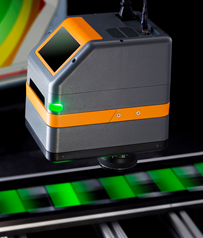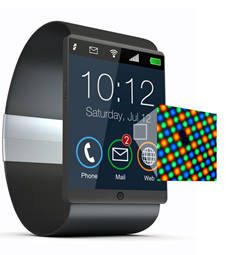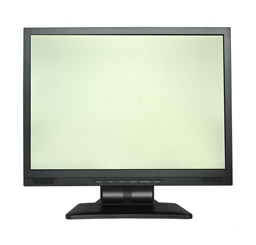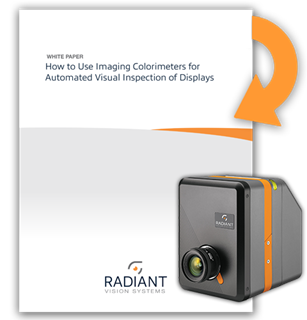4 Reasons Imaging Colorimeter Systems Make Better Display Quality Inspectors than Humans
Thu, February 23, 2017
Topic:
Human perception will always be the ultimate gauge of quality when it comes to flat panel display appearance. After all, the end user of a smartphone, tablet, PC, and TV is a human – one who will spend a lot of time looking at, and enjoy, or not, interacting with it. Colors that are off, non-uniform appearance, or other defects will result in a poor experience.
Given this, it stands to reason that manual inspection has historically been the most prevalent method of evaluating display quality during the production process. But human inspectors face a number of challenges in a high-throughput manufacturing environment. Given a brief time to perform the inspection, a wide range of potential defects to look for, a limited attention span, and fatigue, humans can easily miss defects in devices moving quickly down a production line.
Replacing human inspectors with imaging colorimeters is one way manufacturers can ensure improved, consistent quality in the displays leaving the factory. Imaging colorimeters replicate human visual perception, meaning they “see” light and color the way a human does. In other words, an imaging colorimeter is a digital human eye. It combines the accuracy of human vision with the high repeatability of an automated system. This combination makes an imaging colorimeter superior in inspection applications than its human counterpart. Here’s why:
-
Limited inspection time. In a production application, inspection for a vast array of potential faults must take place within an allotted period of time – usually just a few seconds. While some defects are easy for human inspectors to detect, like a cracked screen; others, such as subtle pixel defects, are much harder and require focused attention. These defects may be missed by a human looking at a display for just a few seconds, but will be highly noticeable to an end customer using it for minutes, or hours on end.

A system comprised of an imaging colorimeter and analysis software solves this problem, capturing and analyzing detailed scenes for multiple variables with high accuracy, much faster than a human can.
-
The “rarity” effect. The repetitive nature of the inspection process tends to cause human inspectors to miss defects when they occur relatively rarely. The inspector gets into a rhythm, attention wanes, and defects can slip through.

An automated solution doesn’t have this problem. Defects are detected reliably and consistently regardless of frequency.
-
Increasing pixel densities. Human inspectors can find pixel-scale defects, but it becomes harder and harder as displays become more pixel dense. As the display resolution increases or the pixel pitch reduces, a human inspector will need to spend a lot of time scanning. Humans can only focus on a small area at a time. On a fast-moving production line, a human does not have the time to fully scan in detail for pixel-level defects, or other subtle defects.

An imaging colorimeter captures a full digital image of the screen at once, and runs tests on the image. It is able to process much faster and more holistically than a human.
-
Mura. Finally, the most challenging type of defect to detect for a human is "mura” - randomly placed, randomly sized, randomly shaped, and randomly bright or dim areas of discontinuity in a display. Human inspectors must make a judgment call as to the severity of the mura: is a dim, large, cloudy area significant? how bright is too bright? what about the size? This assessment can be very subjective and different inspectors may make different judgments.

With an imaging colorimeter system, mura can be assigned a quantitative value based on “just noticeable differences” (JND) and similar metrics, which evaluates how noticeable a mura is. A display can be readily judged as “good” or “bad” against a defined set of objectives.
An imaging colorimeter system “sees” defects as well as the best human inspectors. Its ability to collect data and operate 24 hours a day also bring added quality and cost saving benefits. Imaging colorimetry, as a “digital eye,” and the software behind it as a slice of the human “brain,” is a highly effective and flexible solution for flat panel display inspection.
To learn more about how to incorporate this technology into your process, read our White Paper “How to Use Imaging Colorimeters for Automated Visual Inspection of Displays.”
Join Mailing List
Stay up to date on our latest products, blog content, and events.
Join our Mailing List

